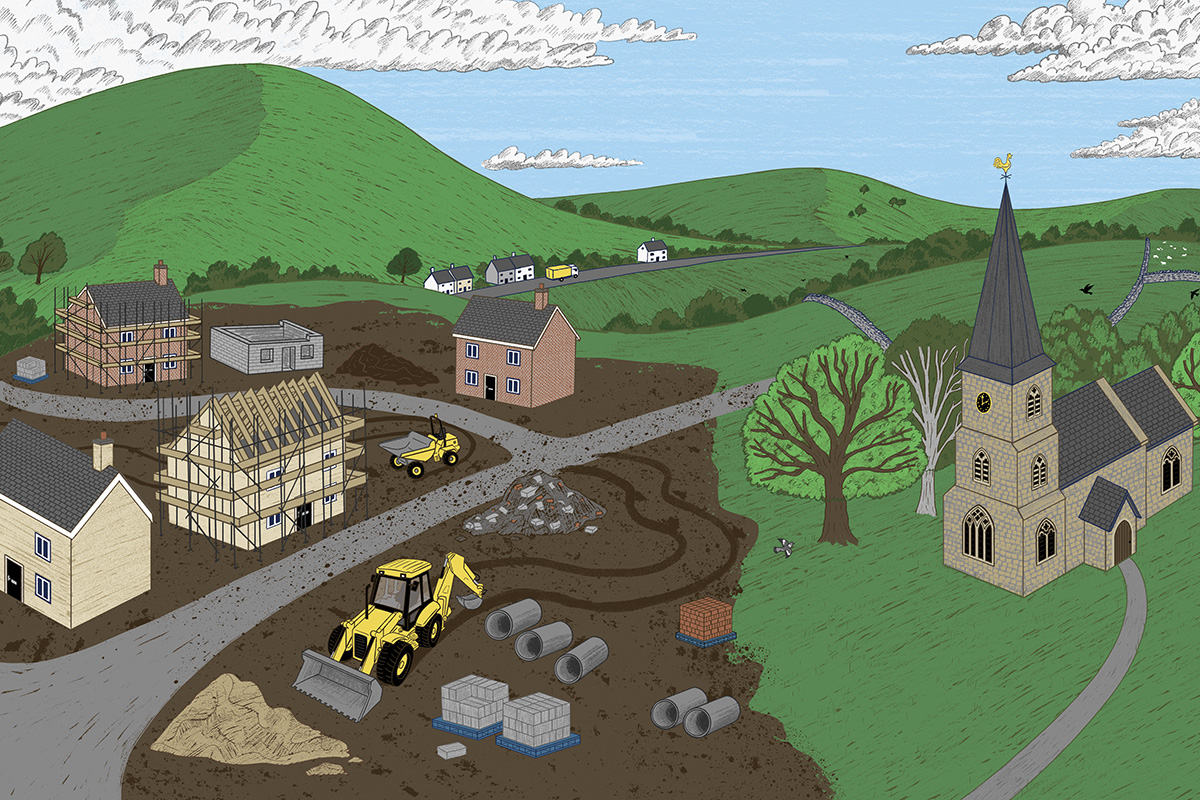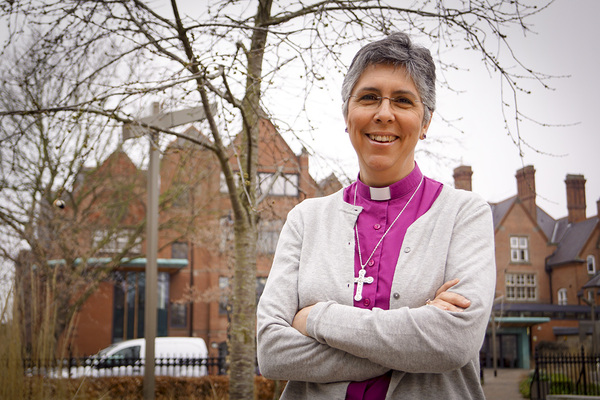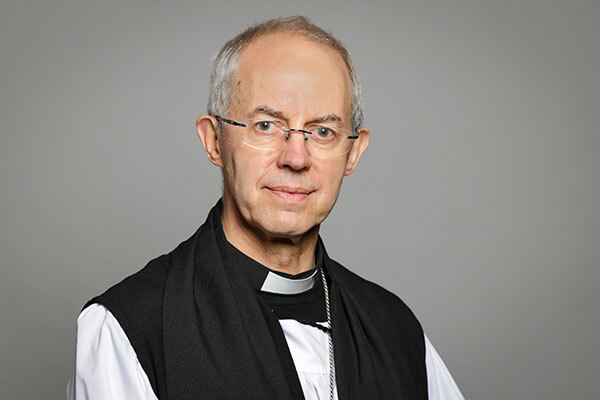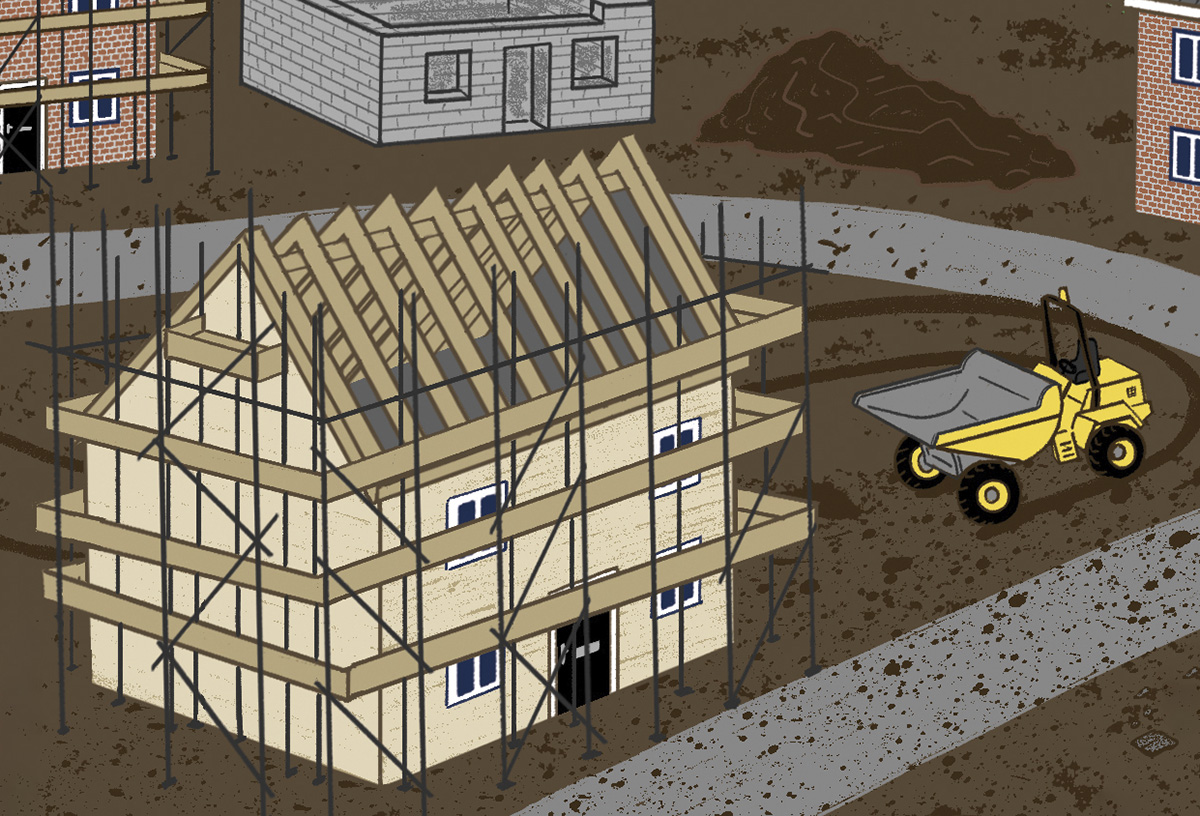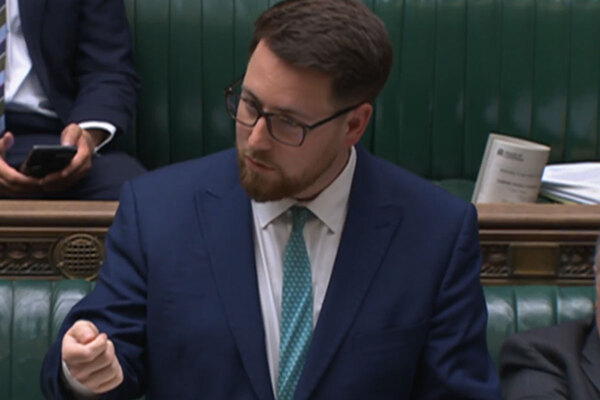You are viewing 1 of your 1 free articles
What the Church of England did next
Earlier this year, the Church of England published its plans to tackle the housing crisis. Inside Housing brought together Church and sector figures to work out the next steps. Martin Hilditch reports. Illustration by Andy Robert Davies
Earlier this year, the Church of England waded firmly into the debate about England’s housing crisis.
Arguing that addressing the problem should be a “national imperative”, it called on government to take urgent action. But the report, Coming Home: Tackling the Housing Crisis Together, didn’t stop there. It also had strong words about what the Church itself should be doing. This included making widespread use of its own land to tackle the crisis. The first ever bishop for housing, Dr Guli Francis-Dehqani, was appointed to lead some of the work.
“We need a Church-owned housing association that can demonstrate the practice we wish to see so that we can then go and model partnerships with others”
So what happened – and is likely to happen – next? The ears of many social landlords will obviously have pricked up at the mention of the Church potentially releasing more land. But the report also indicated that the religious institution would be very picky about who it works with – and only choose those who are extremely committed to delivering “truly affordable” homes. What will social landlords have to do in order to cut the mustard?
In order to answer some of these questions, Inside Housing gathered together a number of figures from the Church and housing associations. Here are some of the issues that emerged from the discussion that might act as a rough guide to a new future – and some of the obstacles that might lie in the way.
The Church of England might set up its own national housing association
Partway through the discussion, Ben Preece Smith, diocesan secretary in Gloucester, which has its own development company, drops the bombshell that one possible next step for the Church would be to set up its own housing association.
“In order to deliver all of our objectives within the report, one of the tools we need is a Church-owned housing association that can demonstrate the practice we wish to see so that we can then go and model partnerships with others,” he explains.
Demonstrating what an exemplar partner might look like is one thing, but there are other reasons for exploring new structures too, Mr Preece Smith states.
“My experience in working with development and building houses is this: there is no better experience than doing it yourself,” he says. “I think it is very difficult to talk and relate to partners in this housing market without being an active participant in it.”
There’s certainly some challenge in his words for some existing social landlords, too.
“One of the things we’ve heard about particularly social landlords is that some parts of the sector can feel quite faceless. That is a real challenge to us at the Church, because if our core is to be a human presence in every community, to be a relatable presence, we cannot have that [facelessness] as the expression of our housing offering.”
“Most of the local housing associations here would not be very interested in partnering on a site like ours, which is a rental model”
Nick Pollock, head of planning for the Duchy of Cornwall, who is currently seconded to the executive team supporting and advising the bishop for housing, adds that talk about a new Church of England housing association are “exploratory discussions” and it certainly would not replace the need for partnerships with others.
“I think it is incumbent on us to look at different options in this first year, just to see what the art of the possible is and what tools are necessary in each location,” he states.
A toolkit to tackle impenetrable worlds and suspicious minds
Both the Church and housing providers operate in worlds that can appear “fairly impenetrable” to outsiders, suggests Bronwen Rapley, chief executive of 35,000-home Onward Homes.
It is certainly a complicated picture, adds Mark Washer, chief executive of 60,000-home Sovereign. “The Church isn’t just one thing, it is individual churches, it is the church commissioners. I don’t pretend to understand the Church of England, but there’s a whole load of different organisations and the housing sector is exactly the same. I suppose there is that sort of idea that you can create a boilerplate solution, which is extremely attractive but probably nigh on impossible to achieve.”
This complexity runs the risk of stymying or stalling attempts at partnership working and could slow progress on the Church’s housing ambitions.
There are concerns various churches might have as well. The facelessness of some bigger housing associations has already been raised, but some in the room are worried about commitments to affordability, too.
Reverend Graham Hunter, vicar of St John’s in Hoxton, raises this issue. “I am fascinated in urban areas as to why housing associations are so reticent now about rental models and so much is absorbed in shared ownership,” he states. “Most of the local housing associations here would not be very interested in partnering on a site like ours, which is a rental model.”
Ms Rapley suggests the Church of England might want to work with the sector to develop a toolkit to “help organisations to work together”, busting myths and explaining structures. This could set out the specifications that the Church is looking for and possibly contain a register of organisations “that would be interested in working in that way”, she states.
The idea proves popular. “I want the toolkit,” states Rev Graham. He says any toolkit should also be accessible to local churches to give them advice and support about how to work with the housing sector and make the best use of their land.
For Mr Pollock, this idea is one of the key takeaways from the meeting. “I would be really interested to explore that matter further with you [the people in the room],” he adds.
What kind of partnerships with the Church might housing associations be interested in?
It is clear from the discussions – and from the report – that whatever the Church does with its land, it wants to have a long-term stake in the results, both socially and financially.
“I think what we’ve been called to look at is a more holistic model that actually considers the long-term engagement of the Church owning that land and maybe not selling it but occupying it for longer and working different models for getting the money we need,” states Mr Preece Smith.
“I’ve had some quite direct conversations with Homes England about this and it’s quite clear it is being driven straight from Number 10 and it is not going to go away”
Certainly, Reverend Jeremy Fraser, vicar of Newham, wants a different type of partnership to the ones he has experienced in the past. He explains: “Twenty years ago, perfectly good housing associations patted us on the head and said, ‘We know what a church looks like, we’ll build you that. And we’ll build a load of social housing.’ Both are now falling down and look appalling.”
He says: “Those days are gone. We need a much more mature partnership. But we’re very happy to pay for that. Because we realise you’ve got the skillset and we haven’t.”
Mr Washer suggests that some social landlords might be interested in working with the Church in ways that they might not have considered in the past.
“I think perhaps we are more relaxed as a sector than we had previously been in terms of the model we will work with going forward,” he states.
“For example, if there is a model where the Church retains the freehold but leases homes that are built on a site to housing associations, I think there would be a huge appetite for that.”
Many housing associations have a similar long-term commitment to the places they work in and environmental and social objectives, says Elizabeth Froude, chief executive of Platform Housing Group.
“I think if we can get visibility of where the Church would like to see development partnerships brought to the table, we are a natural partner for this sector.”
Matthew Walker, chair of the PlaceShapers group of housing associations, adds there are lots of partnerships that might develop “from selling the land, to doing the development, to being a management agent”.
“I would suggest that that’s an issue for the Church to establish itself before it starts talking about these partnerships. There are plenty of opportunities and plenty of associations willing to engage probably at all of those different levels. But you need to decide what level of control you want over a site before coming to talk to a housing association. I would feel comfortable saying that it will be a coalition of the willing and that we [PlaceShapers] are happy to be a connection point.”
Changing the national dialogue about housing
From pushing for more “genuinely affordable” housing to be built, to reforming the benefit system, the report had much to say about the need for change at a national level. Complaints about housing association behaviour need to be looked at through the policy framework, suggests Ms Froude. The Church could start to use its voice more to “start to influence the government agenda”, she states.
“[Currently] if you want to build a scheme and you want to put government grant in it, you’re hostage to the government agenda,” she states. “The government agenda is moving to 50% shared ownership. If we want to put grant in, we have no option as social landlords – either not to take grant and build lots of shiny commercial units or open market units [to cross subsidise], or to take the grant but have to build 50% shared ownership. I’ve had some quite direct conversations with Homes England about this and it’s quite clear it is being driven straight from Number 10 and it is not going to go away.” She adds this can be a positive too in terms of delivering mixed communities.
“We are hopeful that in about 12 to 24 months we should have good intelligence as to what surplus land there is. And we want to have discussions like this with partners to see how we can release good-quality, affordable housing”
Mr Preece Smith suggests the Church is likely to use its voice more often on the public stage.
“The oddity we have is we have some people in fancy dress in the House of Lords,” he says. “That gives us a voice in parliament directly. And we shouldn’t be shy.”
What else might be coming from churches
For starters, the Church of England’s report is not the only game in town. Alison Olugunna, director of strategic property development at the Methodist Church, says it is also looking at the use the Church makes of its land.
“For many circuits and districts, the story is the same up and down the country: which is that affordable housing remains very high up the agenda,” she states. “So what myself and colleagues within the Church are doing at the moment is to work with these local churches to put together property portfolio reviews to understand what land we have available to fulfil this need. We’re not as advanced as the Church of England, but we are hopeful that in about 12 to 24 months we should have good intelligence as to what surplus land there is. And we want to have discussions like this with partners to see how we can release good-quality, affordable housing.”
The Church of England’s approach could involve different churches working together. Joanne Thorns, regional officer of North East Churches Acting Together, says: “One of the things we are particularly looking at in the North East is how we can work ecumenically, so it is not just about the Church of England, but working with some other churches across the area to look at how we do this sustainably together. How do we combine areas? What do we do about creative thinking when we’ve got a raft of buildings in one space?”
